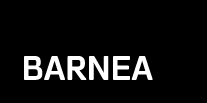A company in financial distress has three main rehabilitation and debt arrangement channels. Each of these channels entails advantages and disadvantages. Applying to the court for relief during the rehabilitation of a company in insolvency offers numerous advantages. However, it also entails a major disadvantage that many people are unaware of. Namely, the application is a one-way street. Upon submission and presentation of the company’s case to the court, the company’s controlling shareholders are no longer able to regain control over the company and settle the company’s debts themselves out of court.
The First Channel: Individual Creditor Arrangements Out of Court
A company embroiled in material financial difficulties can opt to formulate individual creditor arrangements with each of its creditors without any court involvement. This alternative is generally suitable for a company with few creditors and a relatively low volume of debt. However, the creditors must still place their trust in the company in order for this type of debt arrangement to be possible. This alternative also enables the controlling shareholders to retain their control over the company and affords considerable flexibility in formulating the debt arrangements. In addition, in any event, if this channel fails, it is always possible to apply for a court proceeding. Applying to the court is usually intended to try to compel a recalcitrant creditor to consent to a settlement.
The Second Channel: Convening Creditors’ Meetings to Approve a Debt Arrangement under the Court’s Auspices
Another alternative is to apply to the court to convene creditors’ meetings for the purpose of approving a debt arrangement for the company. When filing such an application, the company must submit a preliminary outline for the proposed debt settlement. During this proceeding, the court appoints an arrangement administrator to the company, who has limited powers and is primarily tasked with overseeing and ruling on the creditors’ debt claims. In this channel, the company’s organs retain control over the company for the most part and can continue operating the company (under particular restrictions), notwithstanding the appointment of the arrangement administrator, and can even receive a temporary stay of the proceedings opened against them. However, the debt arrangements are limited, since they must be egalitarian and transparent in relation to all creditors and comply with the debt repayment priorities prescribed by law.
In this channel, failure of the arrangement (i.e., the company fails to comply with its provisions) will lead to its cancellation. At this point, the controlling shareholders will no longer be able to attempt to formulate individual debt arrangements, since the company is already classified as “insolvent” and cannot discriminate between creditors or act in violation of the debt repayment priorities prescribed by law. It is reasonable to assume that upon cancellation of the debt settlement, the arrangement administrator will take action on behalf of the creditors and file an application for the issuance of an order to open proceedings against the company and an application to appoint him as trustee, in order to prevent the controlling shareholders from prioritizing creditors.
The Third Channel: Order to Open Insolvency Proceedings
The third alternative is to file an application with the court for the issuance of an order to open insolvency proceedings against the company. During these proceedings, a trustee is appointed to the company, who is delegated all of the authorities of the company’s organs. This proceeding ensures an immediate stay of legal proceedings for the company and provides the trustee with use of an extensive legal “toolbox” to promote the company’s rehabilitation by operating the company and preserving its assets. However, as stated, control over the company and its activities is taken away from the company’s organs and is handed over to the trustee. Thus, it is the trustee who ultimately decides whether to refer the company to rehabilitation and recovery or to liquidation and dissolution.
Subsequent to the filing of an application for an order to open proceedings, even if an insolvency order has not yet been issued and a trustee has not yet been appointed to the company, the court will not allow the company and the controlling shareholders to withdraw their application. Therefore, the filing of the application is an irrevocable action the controlling shareholders cannot retract. An Israeli court recently adjudicated such an instance, when owners of a company filed an application for an order to open proceedings but realized, only after the fact, that they lost all control over the company. They, therefore, filed another application to strike the court proceeding. The court rejected the application and ruled consistently with the Supreme Court that, in this case, the applicants cannot turn the clock back and withdraw their application.
The fact that this is an irrevocable proceeding underscores the importance of obtaining professional legal advice and examining all possible consequences of choosing any one of the debt arrangement alternatives, and especially choosing to file an insolvency application with the court.
***
Barnea Jaffa Lande’s Litigation Department is at your service if you have any questions about insolvency, recovery plans, or creditor arrangements.
Adv. Idan Miller heads the firm’s insolvency practice.


